Nicole Ladrak interview: Paintings of fabric
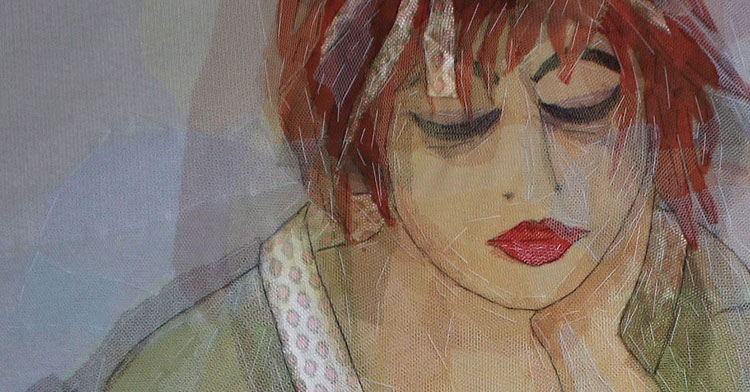
Nicole Ladrak creates what she terms ‘paintings of fabric’ (although no paint is used) to create figurative textile art. The images consist of several pieces of plain fabric, topped with layers of tulle. Then fabric and tulle are finally sewn together with a technique called ‘stabbing’. The layers of tulle give the work an unexpected depth and the highly visible ‘stabbing’ enhances the contours.
Her preference is for work featuring women lying, reading, musing or drinking a glass of wine, which gives her work a beautiful tranquility that appealed to us. In TextileArtist.org’s review of the book Textile is Alive! textile artist Sue Stone picks out Nicole’s work as one of the highlights of the book.
Here, among other things, Nicole explains how her work has evolved; what started out as abstract has become simpler yet more detailed.
A unique technique of manufacturing artworks
TextileArtist.org: What or who were your early influences and how has your life/upbringing influenced your work?
Nicole Ladrak: I came into contact with textiles for the first time through my mother. She was always spinning, wool-dyeing and making rugs and she had a very good sense of color combinations. My father was a piano teacher, but he also drew and painted.
What was your route to becoming a textile artist?
When I was 21 I started my textile training at the Academy of Arts in Amsterdam, where I graduated in 1984. During my training I developed my own unique technique of manufacturing artworks. In the first years after the academy I was a teacher in art history and textiles at secondary schools in Amsterdam. I also earned money by designing and making the costumes for several theatre producers, like the Amsterdam Theatre Institute, The Dutch Theatre Orchestra and Child Theatre. I didn’t make a lot of paintings in those days. In 1995 I decided to stop teaching to pursue a career as a full-time artist. I have never regretted that decision.
Textile paintings
What is your chosen medium and what are your techniques?
My art works can best be described as “textile paintings”, although I don’t use any paint. Using several levels of textiles I initially make a basic image. These layers I cover with tulle to create a background atmosphere. I use a lot of color in my paintings. The perspective and depth are then further enhanced by creating light and dark areas in the work. Big playful stitches are then applied to the tulle and the initial image to illustrate and emphasize essential outlines. The final result has a strong spatial effect, especially when viewed at a distance. People often won’t believe the work is made of textile.
How would you describe your work and where do you think it fits within the sphere of contemporary art?
My work is figurative textile art and portrays mostly female characters sitting at a table or on a sofa, and still-life subjects like tables or kitchens with fruit, fish, vegetables, wine and crockery. You don’t have to wonder about what it means; what you see is what you get.
A haven with no distractions
Tell us a bit about your process and what environment you like to work in?
I often start with a little drawing, to practice with the dimensions and proportions. After that the process with the textiles starts. The larger works I make on the wall, the smaller ones on the table. I always work in my atelier, which is in the basement of our house. It’s quiet there, without any noise from the environment. Mostly I listen to music and talk shows on the radio.
What currently inspires you and which other artists do you admire and why?
I’m inspired by images I see in books, magazines, in my garden and kitchen, on the street; they can be anywhere. Artists I admire very much are the Dutch painter Kees van Dongen and the impressionists, Matisse and Renoir.
Tell us about a piece of figurative textile art you have fond memories of and why?
One painting I made was called ‘In the swimming-pool’. I made it after a visit to the pool, where I encountered these two women. They made me laugh, but the image was also pure and beautiful.
From abstract to realism
How has your work developed since you began and how do you see it evolving in the future?
Initially my work was much more abstract than it is now. The women I originally made didn’t have the right dimensions and were more rough. I did a lot of smoking and drunk women in bars, naked or half-naked. Over the years the paintings became more realistic and proportionate. The eyes changed from abstract black strips, to more realistic eyes, mostly closed, but sometimes open.
Do you give talks or run workshops or classes?
No, I don’t. I want to concentrate on my work. I used to teach in several educational institutions but I don’t need that anymore. At exhibitions I have to explain how I work all the time. That’s strange; if I had been a painter that probably wouldn’t have been necessary.
How do you go about choosing where to show your work?
There are two galleries, one in Amsterdam and one in Utrecht, which have work in stock permanently and where I have exhibitions a few times a year. Furthermore people ask me to exhibit my work at various locations in the Netherlands.
Where can readers see your work this year?
In June you can see my work in the gallery Artacasa in Amsterdam and in September at an exhibition in the city of Hoorn during an art festival. People are also invited to visit my atelier in Amsterdam.
For news, more information and images of my works people can visit my website: www.nicoleladrak.nl
If you’ve enjoyed this article, why not share it on Facebook, Twitter or Pinterest using the buttons below.

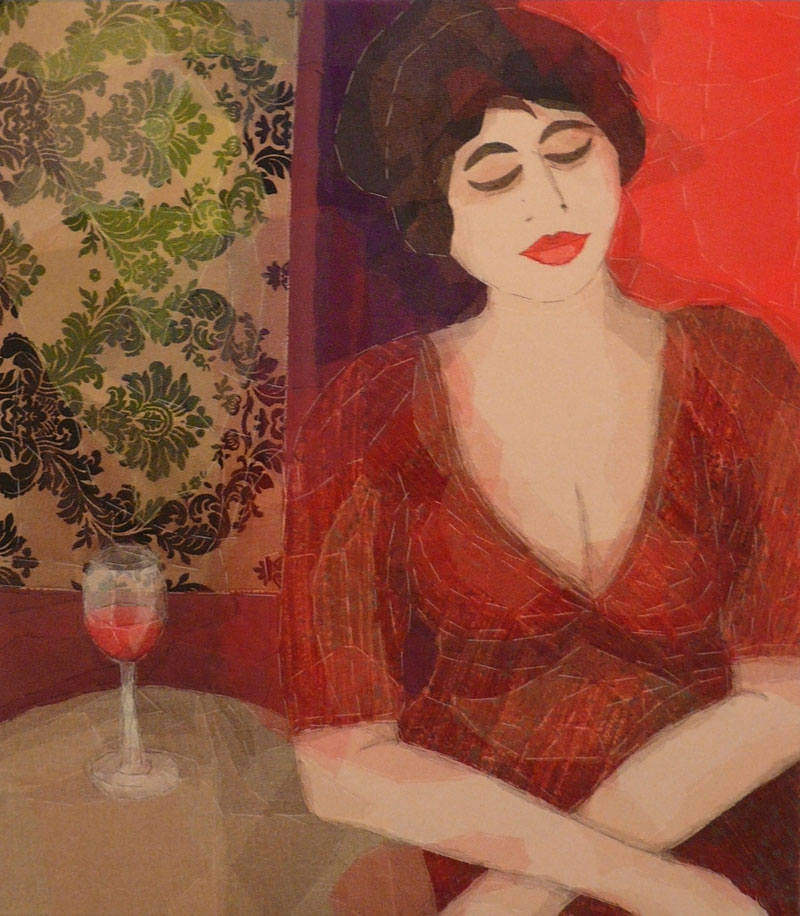
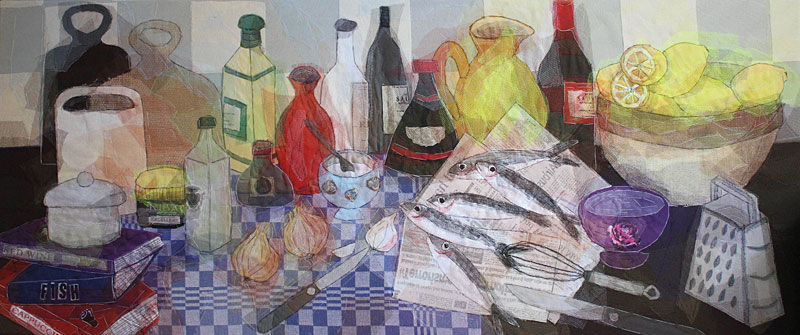
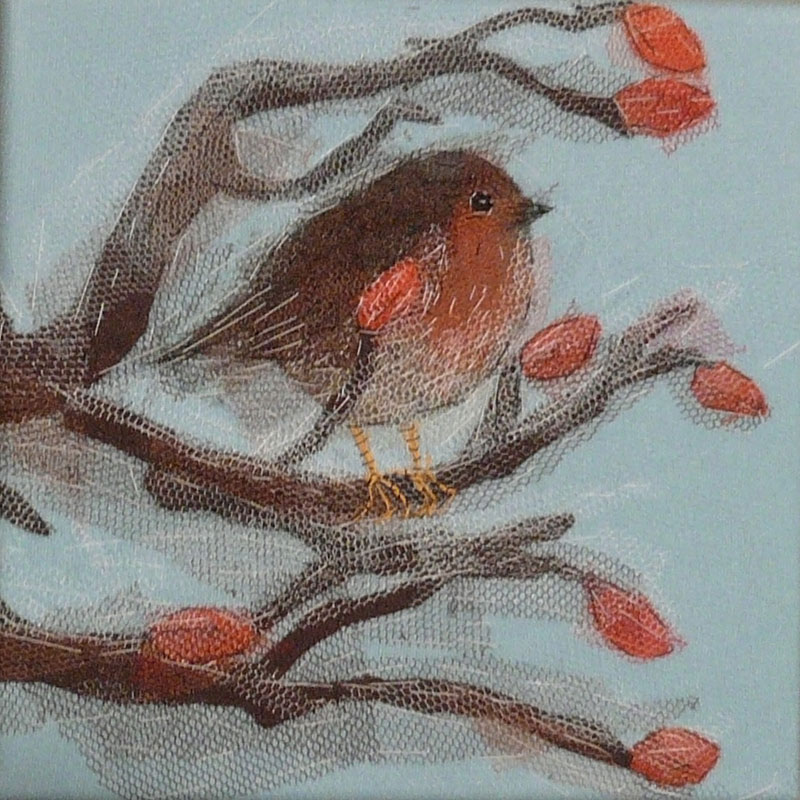
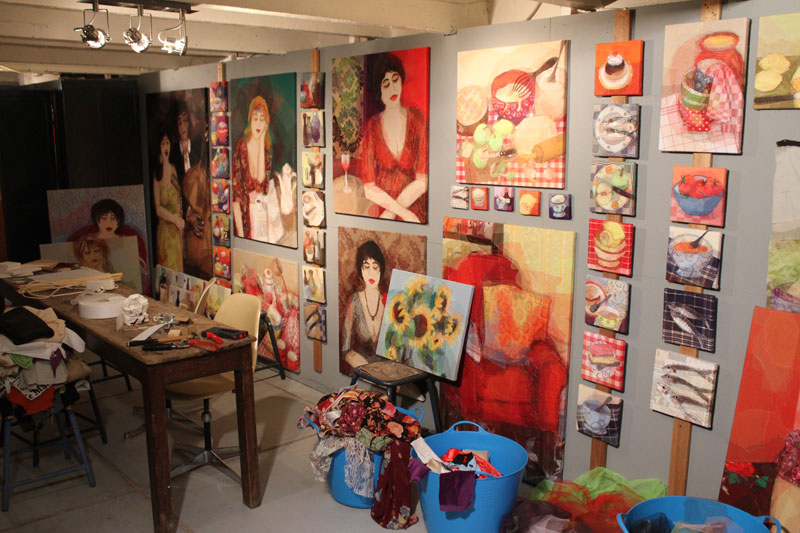
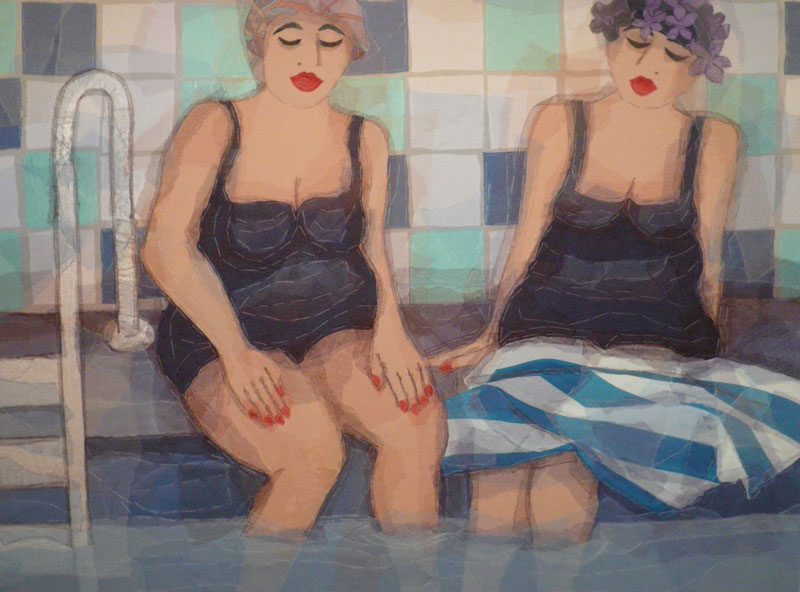
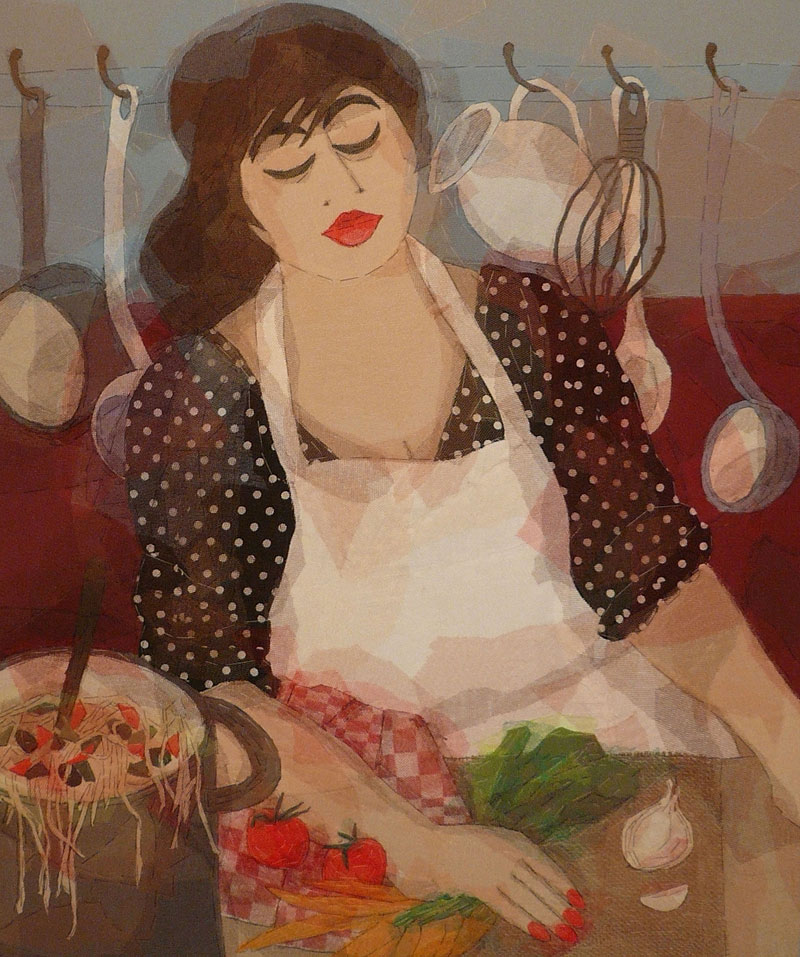
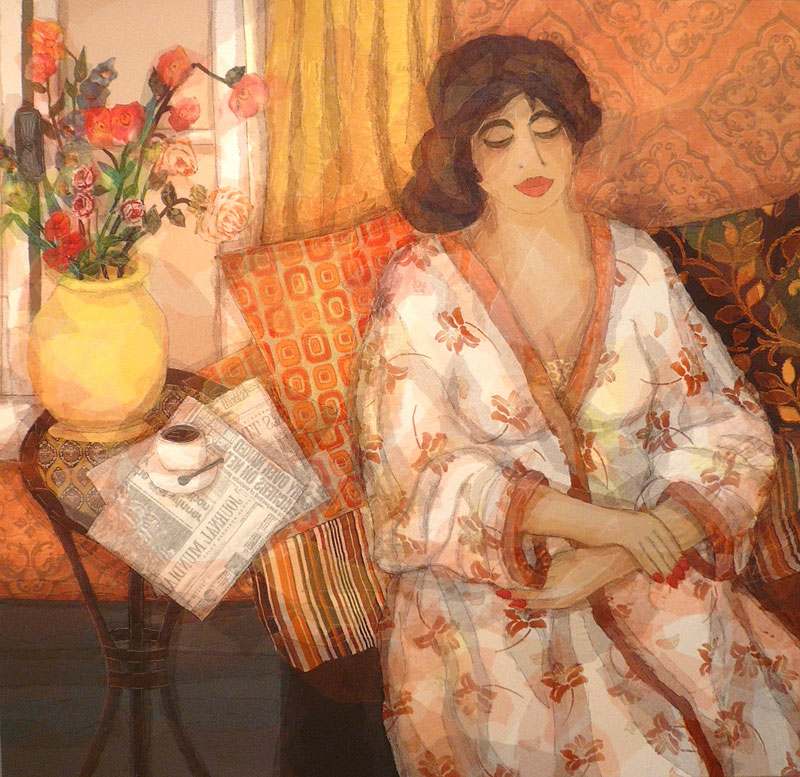















hello can you please tell me a bit more about this interview i need a refrance
your name
year it was done
mouth, date
broadcasted
station
city
editor
translator
year accessed
mouth accessed
date accessed
please i need this than you i hope that i hear from you.
Hi there. This interview was done this year (2013) by Sam Pitcher. It was note broadcast – it was done especially for this blog. The editor was the interviewer and it wasn’t translated (Nicole answered the questions in English).